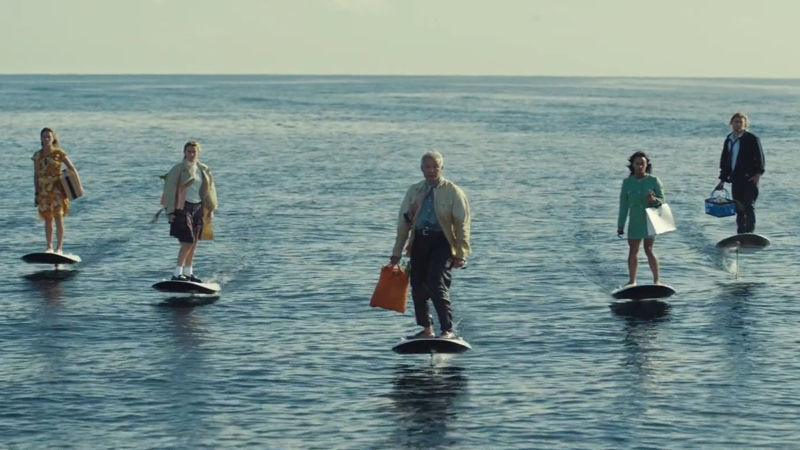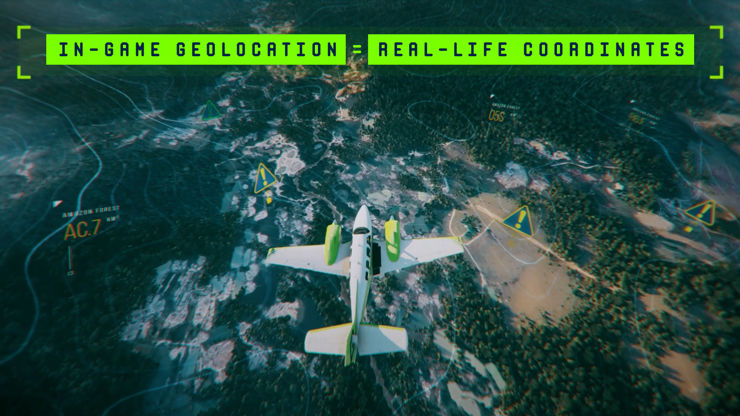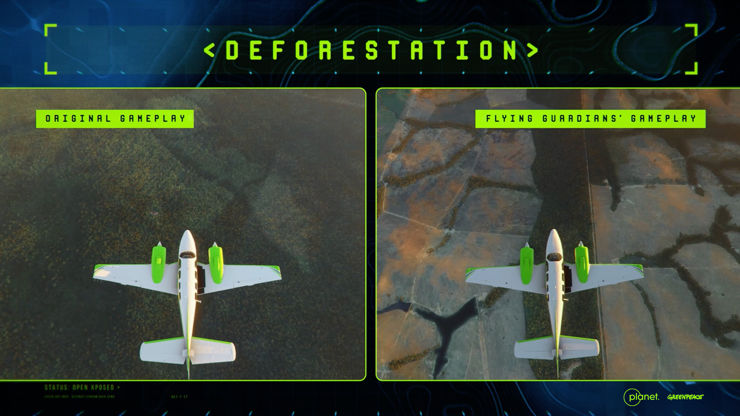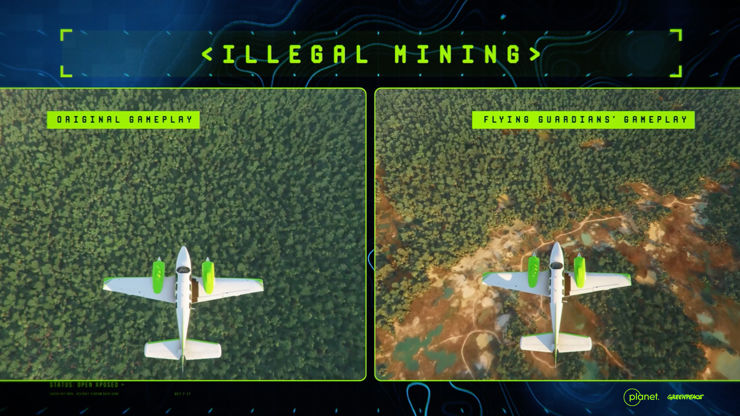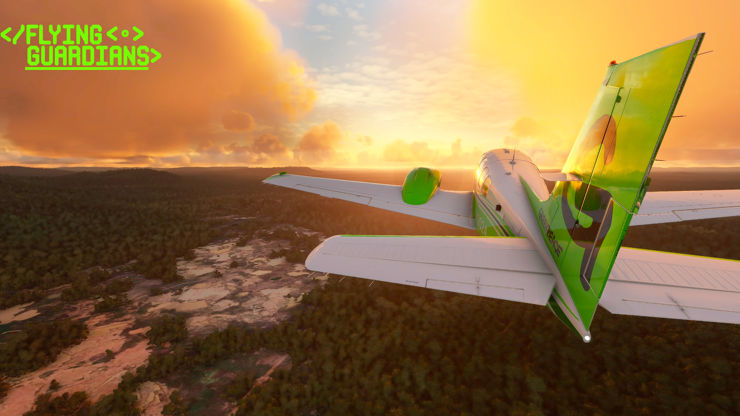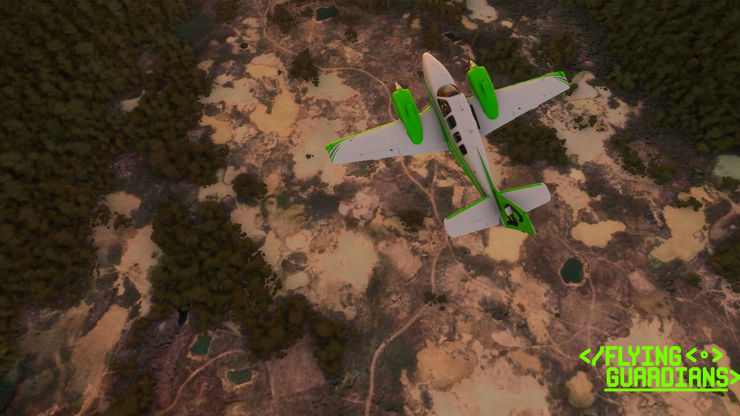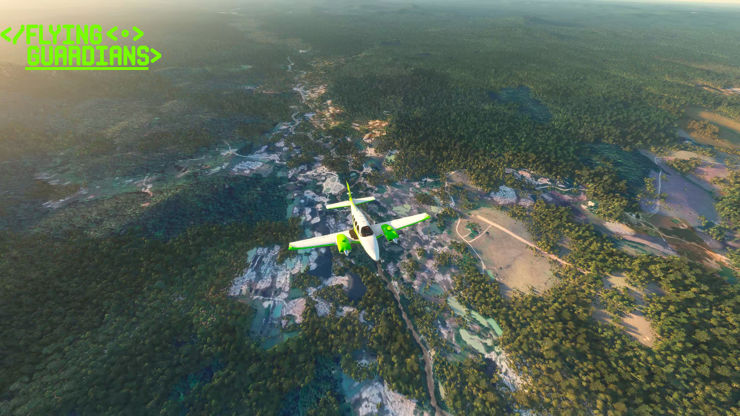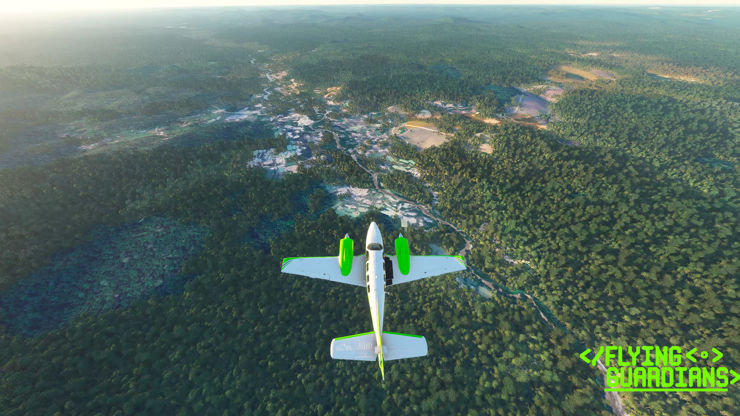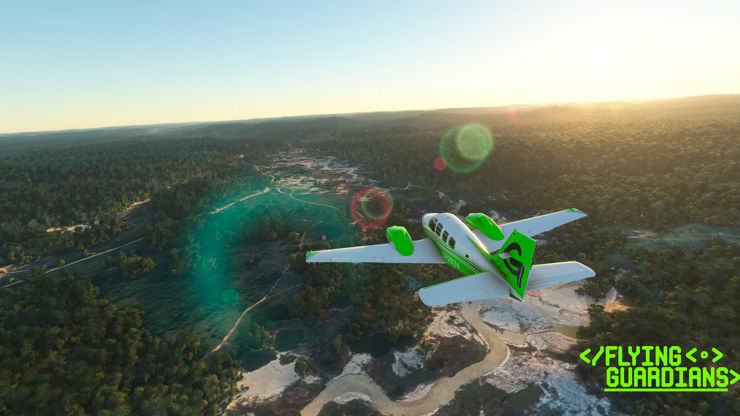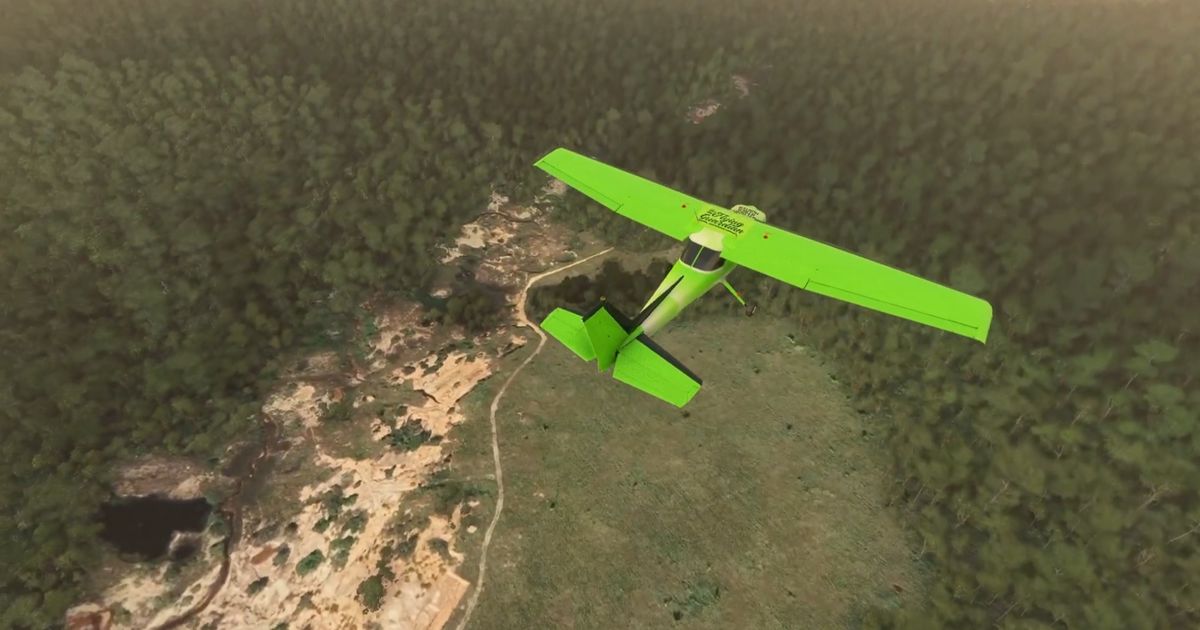How Greenpeace turned a flight simulator into an environmental scanner
shots speaks to AlmapBBDO CCO Marco Giannelli about how the innovative, crowd-sourced sky-scanning project came to fly.
In its ongoing effort to confront environmental issues using all resources at its disposal, Greenpeace has tapped several resources, but who knew gaming could be so fruitful?
Utilising Microsoft Flight Simulator - the most popular software of its type - and up-to-date satellite imagery from Planet Labs PBC, the charity managed to recruit gamers into scanning the forests of the Amazon for deforestation and illegal mining sites, via an installable mod.
Intrigued by the potential for such an interesting mixture of sources, we sat down with AlmapBBDO CCO Marco Giannelli to find out what led to the formation of Flying Guardians.
Credits
powered by
- Agency AlmapBBDO/Sao Paulo
- Production Company Vetor Zero
- Director Luiz Alberto Ferreira
-
-
Unlock full credits and more with a Source + shots membership.
Credits
powered by
- Agency AlmapBBDO/Sao Paulo
- Production Company Vetor Zero
- Director Luiz Alberto Ferreira
- Executive Producer Alberto Lopes
- Motion Designer Bruno Ronzani
- Post Production Livia Portugal
- Audio Post Bari Filmes
- Audio Post/Music Alma 11:11 Audio
- Music/Music Producer Diego Raso
- Executive Music Producer Carla Brauninger
- Chief Creative Officer Luiz Sanches
- Chief Creative Officer Marco (Pernil) Giannelli
- Executive Creative Director Rafael Gil Da Silva
- Executive Creative Director Rodrigo Almeida (Monte)
- Creative Director Deborah Vasques
- Creative Director Eduardo Vares
- Creative Felipe Paganoti
- Creative Igor Pontes
- Creative Rafael Rangel Reis
- Creative Victor Laars
- Producer Diego Villas Boas
- Producer Giuliano Enrico Springhetti
- Graphics Producer Jose Roberto Bezerra
- Graphics Producer Marcos De Souza
- Editor Pedro Falcone
- Motion Designer Luiz Alberto Ferreira

Credits
powered by
- Agency AlmapBBDO/Sao Paulo
- Production Company Vetor Zero
- Director Luiz Alberto Ferreira
- Executive Producer Alberto Lopes
- Motion Designer Bruno Ronzani
- Post Production Livia Portugal
- Audio Post Bari Filmes
- Audio Post/Music Alma 11:11 Audio
- Music/Music Producer Diego Raso
- Executive Music Producer Carla Brauninger
- Chief Creative Officer Luiz Sanches
- Chief Creative Officer Marco (Pernil) Giannelli
- Executive Creative Director Rafael Gil Da Silva
- Executive Creative Director Rodrigo Almeida (Monte)
- Creative Director Deborah Vasques
- Creative Director Eduardo Vares
- Creative Felipe Paganoti
- Creative Igor Pontes
- Creative Rafael Rangel Reis
- Creative Victor Laars
- Producer Diego Villas Boas
- Producer Giuliano Enrico Springhetti
- Graphics Producer Jose Roberto Bezerra
- Graphics Producer Marcos De Souza
- Editor Pedro Falcone
- Motion Designer Luiz Alberto Ferreira
How did you guys get involved in this project? Did the concept develop in-house?
The concept for the Flying Guardians was born here at AlmapBBDO, and the idea came out of the need to engage the public in defending the environment.
The thing is, the data about environmental destruction is out there. The information’s freely available. The problem is that the numbers and the images aren’t exactly attractive.
What we were able to achieve with Flying Guardians was to transform data from cutting-edge satellites into a gaming experience – one that’s interactive, dynamic, and content-rich.
[Environmental] information is freely available. The problem is that the numbers and the images aren’t exactly attractive.
Most importantly, it is an experience with the potential for a major real-world impact, with the possibility of issuing reports (based on actual coordinates).
There could be no more relevant brands than Planet, a leader in daily Earth satellite data, and a legendary organization like Greenpeace, to represent those two elements.
Can you tell us about the development of the mod? How was the satellite tech integrated?
It was quite a long, complex process. But, to sum it up: in order to update the Microsoft Flight Simulator map, we had to find a way to merge the game with footage from the world's most cutting-edge satellites.
After months of tests and development, we were able to pull it off by changing the game's source code. The game’s original map was sourced from BING. So we changed the source to Planet’s satellites’ data.
In order to do that, we had to adapt the game’s API to be compatible with those satellites.
The game has a built-in mechanism that renders 3D maps – so the platform translates that incoming data automatically.
But the whole process only really worked because of the amazing quality of the images we got from Planet. They’re filtered for maximum visibility and clarity using artificial intelligence to select the best-quality pixels. That way, you don’t get interference from clouds, for example.
Were there any issues in implementing the tech? What was the toughest hurdle to leap?
Over a few months, there were times when we thought it might be impossible. After all, we were trying to integrate two very different platforms: a flight simulator and cutting-edge satellites.
That meant dozens of compatibility tests and lots of time programming and reprogramming everything. Luckily, we had a tireless team of developers on our side.
Our biggest challenge was definitely the integration process. There was nothing for us to base our work on, no precedent for what we were doing.
The other elements of the experience - access to the petition, the donation tool, the radio channels, and the notifications, for example - were all pre-existing game elements. In those cases, we just had to adapt them to fit our needs.
It was time-consuming, but we knew what we had to do.
How is the project communicated to gamers? Is there a risk with dealing with the modding community rather than through the software developers themselves?
To reach the gaming community, we turned to its “leaders”: gamers themselves.
We recruited dozens of streamers to stream Flying Guardians live and produce content on Twitch, YouTube, Instagram, TikTok, and elsewhere.
Over a few months, there were times when we thought it might be impossible.
We also got the support of digital influencers, who received a press kit telling the story of the project. They posted Stories and other content that helped introduce the Flying Guardians to even more gamers.
The engagement far exceeded our expectations. The gaming community, especially people who were already into Microsoft Flight Simulator, really embraced the project. Hundreds of environmental alerts were submitted in the first days.
It’s really amazing to think that now, each player can be a real-life defender of the forest.
That’s what you call taking gaming to another level.
Do you see this tech scaling further? Will there be a second stage to the activation?
From the get-go, Flying Guardians felt like it could be expanded, scaled out to other countries. And that’s the question everyone asks.
The answer is: yes, we’ve got big plans, and big dreams. Especially because of the feedback we’ve been getting about the project – from specialists, the press, and gamers themselves.
Since the coordinates are real, we could easily expand to anywhere in the world. Our first mission is focused on the Amazon, but our goal was always to create a tool that could be used on an ongoing basis.
For the time being, we’re focused on this first stage; but before too long, we should be back with more news.
The project does a great job of harnessing the 'people power' of gamers and tech. Is this a trend you'd like to explore further? What do you think the industry could learn from this?
That was always our goal – to give people the power to make a difference.
That’s what Flying Guardians is about. It’s about letting anyone and everyone be an agent for change. Someone who can watch over nature and defend it.
It might seem like it’s about tech. But it’s about people.
I think that when people – not just us, but the whole creative industry – when we look to the gaming world, that’s what we’re looking for. A way to engage people.
Flying Guardians is about letting anyone and everyone be an agent for change.
Whether it’s with a story, an experience, as we’ve seen elsewhere, or by transforming a game into an interactive environmental defense tool, as with Flying Guardians.
We couldn’t be prouder of the result, particularly because it was a partnership with two incredible organizations, Planet and Greenpeace, and because it’s about such an important issue: preserving our planet.
We can only hope that, in years to come, more projects follow the same path. And that the gaming world can increasingly be put in service of the real world.
)

